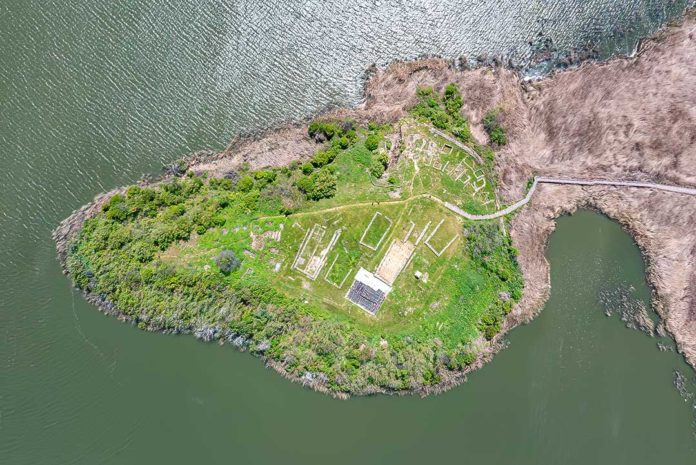Nestled along the serene coastline of Bulgaria, Durankulak offers more than just picturesque landscapes and tranquil beaches. This captivating destination is a treasure trove of archaeological discoveries, unraveling the mysteries of ancient civilizations that once inhabited this remarkable region. As we delve into the fascinating history and timeless beauty of Durankulak, let us embark on an inspirational journey through time, revealing the stories of those who walked this land before us and the remarkable archaeological findings that continue to captivate scholars and visitors alike.
The Inhabitants of Durankulak
Durankulak’s rich history dates back millennia, with evidence of various ancient civilizations that once thrived in this region. From the prehistoric inhabitants who established the first European civilization to the Thracians, Greeks, and Romans, each culture left an indelible mark on the fabric of Durankulak’s heritage. As we explore these ancient civilizations, we can appreciate the resilience and innovation that defined the people of Durankulak, giving us a deeper understanding of our shared human history.
Archaeological Value of Durankulak
The archaeological discoveries of Durankulak provide invaluable insights into the lives and cultures of its past inhabitants. Excavations have unearthed numerous artifacts, including pottery, tools, and ornaments, which glimpse these ancient civilizations’ daily lives and artistic expressions. The Durankulak Archaeological Complex, which encompasses the Durankulak Lake and its surrounding areas, holds significant value as an open-air museum, showcasing the remnants of prehistoric settlements, ancient necropolises, and fortified structures that stand as a testament to the region’s rich history.
Unearthing the Secrets of Durankulak
One of Durankulak’s most significant archaeological findings is the prehistoric settlement of Durankulak Island, also known as the “Island of the Dead”. This Neolithic site, dating back to 5000 BCE, provides a rare glimpse into the lives of the first European civilization. Excavations have revealed well-preserved architectural structures, including houses made of wattle and daub and stone walls that protected the settlement from invaders.
Additionally, the discovery of the Durankulak necropolis has shed light on the ancient burial rituals and beliefs of the people who inhabited this region. The necropolis, which dates back to the 5th century BCE, contains more than 1200 tombs, offering information on the late New Stone Age period’s funerary customs and social hierarchies.
The enchanting beauty and archaeological significance of Durankulak provide an unparalleled window into the rich tapestry of human history. As we explore the ancient settlements, uncover the stories of their inhabitants, and marvel at the archaeological discoveries, we are reminded of the resilience and creativity that have shaped our shared heritage. Durankulak serves as an enduring testament to the importance of preserving and celebrating our past, as it inspires and enlightens future generations.
The Fascinating Layers of Durankulak’s Rich History
The beautiful region of Durankulak holds a treasure trove of archaeological wonders, revealing a history that has thrived for over 6,000 years. The first prehistoric graves, discovered in 1979, marked the beginning of an extraordinary exploration, uncovering a vast necropolis that has functioned continuously from the Late Neolithic to the Eneolithic. The Durankulak Lake complex now stands as a chronological and cultural landmark for the region of Dobruja, the Western Black Sea, and the Lower Danube.
At the heart of Durankulak lies the Great Island in Lake Durankulak, inhabited with only minor interruptions throughout the ages. The numerous archaeological findings on this island provide a fascinating insight into the complex layers of history that unfolded here. The Durankulak-Blatnitsa Neolithic settlement, dating back to the second half of the 6th millennium BC, offers a glimpse into the lives of the earliest permanent settlers in this part of Europe.
The discovery of over 1,200 Neolithic and Stone-Copper Age graves has provided valuable knowledge about early copper metallurgy, trade connections, burial practices, and cult representations. The rich inventory found within these graves, including clay vessels, idol sculptures, and various ornaments, further highlights the region’s cultural significance.
The island’s ancient history continues with a Thracian settlement from the Late Bronze Age, believed to be the beginning of the Thraco-Getic tribal community. A sanctuary dedicated to the Thracian Great Mother Goddess Cybele, dating back to the Hellenistic era, further showcases the area’s rich cultural tapestry.
The western shore of Lake Durankulak reveals an ancient necropolis from the 3rd century BC to the 4th century AD, including catacomb graves and Roman burials. An Old Bulgarian settlement and necropolis from the 9th to 11th centuries further enrich the historical narrative, with over 240 dwellings discovered and several rare pagan burial pits.
The Great Island Settlement Mound in the Durankulak Lake, inhabited continuously throughout the Stone-Copper Age and beyond, exemplifies the highly developed prehistoric culture that eventually evolved into the Varna culture. This settlement mound, home to the oldest stone architecture on the European continent, remains the only fully explored multi-layered archaeological site from the Stone-Copper Age in the Western Black Sea region.
Durankulak’s extraordinary history, spanning millennia and various civilizations, serves as a testament to the endurance and evolution of human culture. With each layer of discovery, we continue to uncover the mesmerizing secrets of this enchanting Bulgarian region.
Visiting Durankulak
When we visited the site in August 2023, it was open for tourists, and some construction was underway. It looked like a visitors’ center, and wooden walking pathways were installed onsite. This will help navigate the archeological site more conveniently and safely. A restaurant with coffee, food, and refreshments is nearby. If you want to try the original Durankulak fish soup, we recommend the Golden Fish (Zlatnata Ribka) restaurant close to Durankulak, roughly 10 minutes away by car. You can also enjoy cooking the Durankulak fish soup at home.



